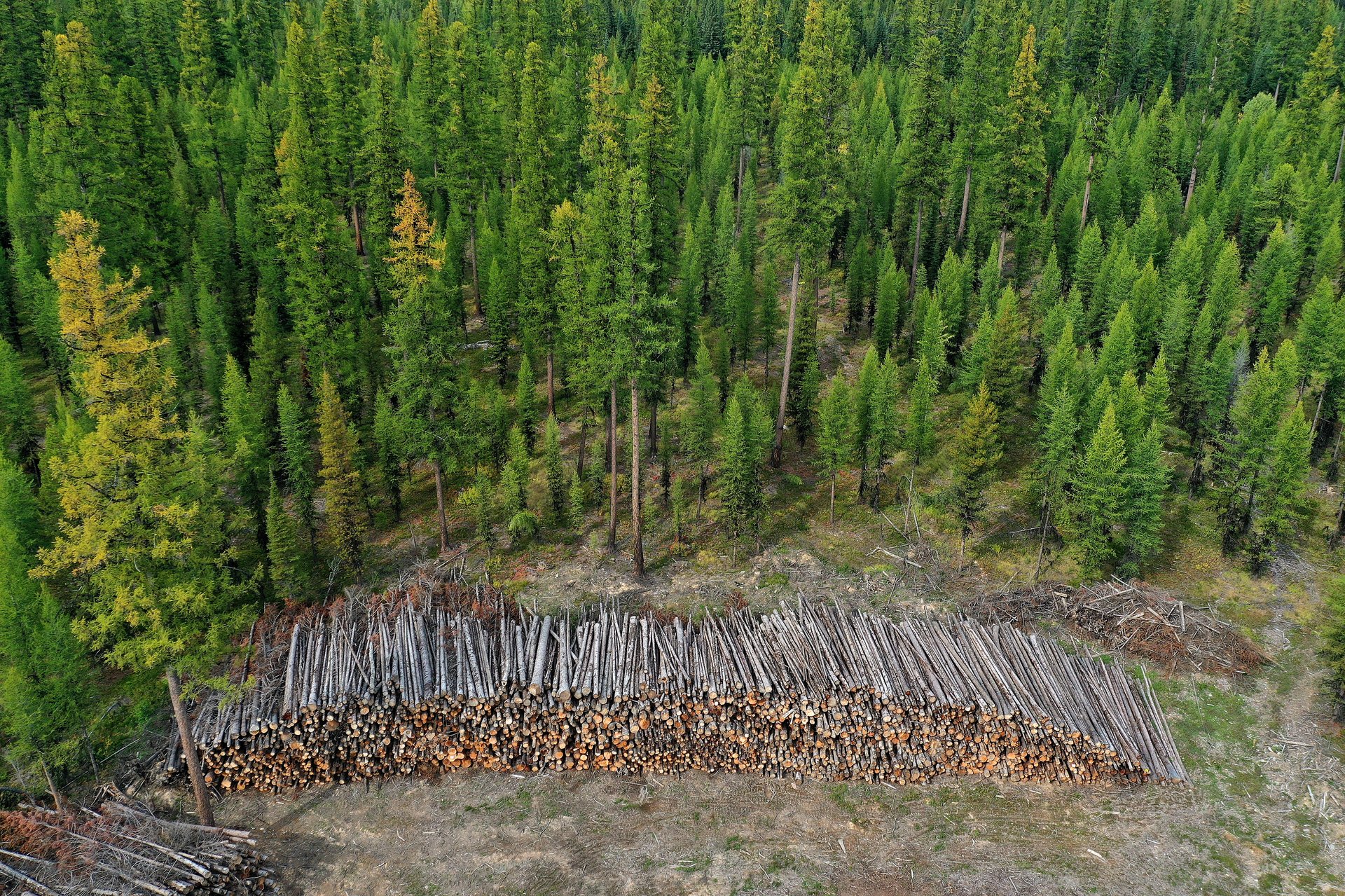North American lumber is moving south
Climate change is driving lumber mills to places with younger and smaller trees

As climate change decimates North American trees, native forests are migrating north—and lumber producers are moving south.
Over the past 5 to10 years, dozens of mills have shuttered in the western US and Canada, where warmer weather has led to beetle invasions and wildfires. Policymakers in places like British Columbia, meanwhile, are becoming more interested in protecting old-growth trees than felling them.
“There’s nowhere to grow in terms of lumber production in the West,” said Crystal Gauvin, a senior economist at the consulting firm Forest Economic Advisors (FEA).
Now a new crop of lumber mills is popping up in the American South, where production capacity has exploded over the past year.
A new hub for North America’s lumber
Lumber companies have traditionally operated out of northwest because of an abundance of trees. For decades, the industry relied on Douglas Fir, which produces straight lumber with few knots for construction. But the industry can no longer rely on those kinds of forests. As the trees get older, they reach a point where they can no longer be harvested, leading to fires that clear the land. Planting younger trees maintains biodiversity, but growing a forest takes generations.
That cycle is much faster in the south, where forests can be replenished every 20 to 30 years. The region also has an abundance of trees. In the 1920s the US Forest Service began reforesting former plantations (pdf), a huge endeavor that led to an overgrowth of trees like Southern Pine.
“We didn’t have near the number of mills in the south to support all the trees that were growing,” said Gauvin.
That makes wood there abundant and cheap. The lumber industry’s big players, Canadian companies like West Fraser, Canfor, and Interfor, are moving south. West Fraser, for example, bought 13 paper mills in Alabama, Georgia, Florida, Texas, North, and South Carolina in 2006. It recently expanded its operations in those areas while curtailing production in Canada.
“It’s not just new mills, but it’s actually those companies that were historically Canadian companies that are doing the investment,” said Gauvin.
This is quickly changing where lumber comes from. While mills in western Canada and the US are still the dominant lumber suppliers, southern US states are catching up. California and coastal areas of British Columbia have fallen off the list, while Alabama, Georgia, Mississippi, and Arkansas are climbing.
Since 2014, nearly 50 mills have closed in the west, according to FEA data. About half of them were owned by Canfor, Interfor, and West Fraser.
At the same time, those companies have opened or expanded in the south, and now account for 17% of the mills there. Other mill owners in the south include Binderholz, Georgia-Pacific, and Teal Jones.
The companies did not respond to requests for comment. A spokesperson for Sierra-Pacific, which closed two mills in Oregon, said the firm does not comment on market issues.
What smaller lumber means for the construction industry
As lumber mills move south, builders will have to adapt, too. Swapping out Douglas Fir for Southern Pine means lumber sources will come from younger and smaller trees. While Southern Pine is a strong wood, it is not as straight as Douglas Fir and more prone to warping.
But the construction industry is moving away from long, straight pieces of wood anyway. Many builders are now using engineered wood made of cross-laminated timber, which is stronger and cheaper.
Modular homes, which are built in parts in factories, are also becoming more popular. Companies that make them don’t need long pieces of wood.
“If you do a prefabricated wood frame, you can save a lot of money. You can build it faster,” said Gauvin.“Modular wood construction has become huge in Europe. We think it’s the future here.”